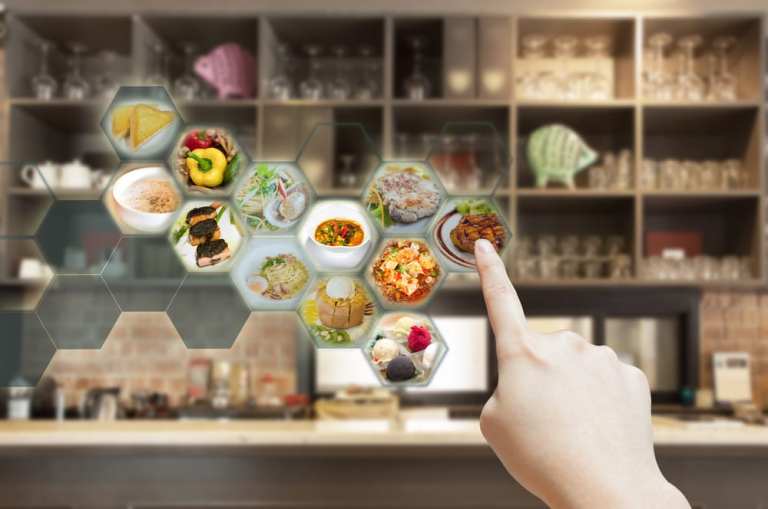Restaurants face major change. Mobile ordering, contactless NFC payments, ordering kiosks and delivery options have all started to take hold, forcing restaurants to rethink their core businesses. The very best among them have large digital strategies that address the full guest experience, from ordering on a mobile device to purchasing on-site right up through food delivery and encouraging the next visit.
Those thoughts came to mind when PYMNTS caught up with Andrew Robbins, CEO of Paytronix, a customer engagement solutions provider. One of the general topics at hand was what it might take to get more restaurants — including quick-service restaurants (QSRs) and fast-casual operations — to get in the game and update their technology, payment and guest engagement efforts for 2020. The stakes are too high to stay behind the pack for too long.
Innovation Sparks
Guest experience is at the heart of the restaurant world. When Amazon created one-click ordering, it transformed eCommerce by making it frictionless. Restaurants are learning from that by creating one-touch sign-up programs, Robbins said. “You want to create that type of experience that makes it very easy to join and to expand memberships,” he noted.
Indeed, reducing friction to a single touch can lead to a doubling of customers and a 20 percent increase in spend over time, he added. “If brands aren’t capturing that revenue today, they’re going to have trouble in the not-too-distant future, maybe even before 2021,” he said — but that day is coming.
It’s not just one-touch technology that matters, either. So does better customer engagement. As recent PYMNTS research has documented, QSRs like Jimmy John’s are focused on boosting customer engagement with their technologies. The company recently rolled out a nationwide loyalty program — powered by Paytronix — after a promising pilot. The sandwich chain debuted Freaky Fast Rewards last month, allowing members to earn various rewards, including sandwiches, sides, drinks and exclusive access to new products. Jimmy John’s is offering a free eight-inch sandwich to anyone who joins the program and completes an order.
Advertisement: Scroll to Continue
That said, loyalty and customer engagement can be an increasingly complicated game, and that’s one reason artificial intelligence (AI) is already playing a bigger role in restaurant operations, according to Robbins. The general idea — which he said is already helping Paytronix’s product and services— translates AI into individual, actionable insights for restaurant operators.
The best restaurants are forward-thinking and working to stay ahead of the changes that have changed the industry forever.
“Some brands only find that they need a more sophisticated system when it’s too late, when they start to struggle,” Robbins told PYMNTS. Sure, that might sound like a sales pitch, but there is truth to it. The restaurant industry is going through significant changes, brought on not only by digital and mobile technologies, but also by shifting consumer preferences and the rise in disposable income among millennials and other consumers.
One way to gain an edge, at least according to Robbins, is to look for opportunities to streamline operations, which could further serve the purpose of making restaurant ordering, payment and delivery more seamless and friction-free. For instance, the rise of third-party online delivery aggregators has helped many restaurants gain new and wider audiences. But the price of that is often more confusion — or potential confusion — on the back end.
As Robbins explained, different delivery services tend to provide their restaurant clients with separate tablets to handle their order flow, and more machines can lead to more inefficiencies over time. “Juggling seven tablets,” he said. “That’s crazy.”
The Customer Journey
As the industry continues to adjust to this new tech-based reality, concepts like AI will play an increasingly important role. Take this example, offered by Robbins: A regular customer, for one reason or another, stops visiting a certain restaurant. The typical response might be to send out a reminder and an offer after a period of time — say, 90 or 120 days. But with the assistance of AI, the timing of that offer could be made much more personal, to more closely match the consumer’s previous habits. For instance, if that person usually eats out on the weekend, AI could help a restaurant target that customer when he or she is planning a restaurant visit, and include a promotional offer catered to their behavior.
The goal, according to Robbins, is to figure out the entire customer journey — even if that person comes from a third-party delivery aggregator — and engage with that customer in a more holistic and efficient manner.
That’s not all that can help restaurants over the next few years, he said. A stepped-up focus on alternative payments — that might mean Apple Pay, Google Pay or even Chinese apps like AliPay or WeChat Pay in certain tourist areas — can help restaurants capture more customers and hold onto them. Indeed, in Robbins’ view, it seems that those alternative payment providers — and not the major payment card networks — will be more important to restaurant growth in the coming decade.
Even so, some restaurants will always be racing to catch up. Robbins takes an optimistic, can-do approach. “Restaurant owners are some of the most entrepreneurial people out there,” he said. “They are always trying to do new things and experiment to improve.”




